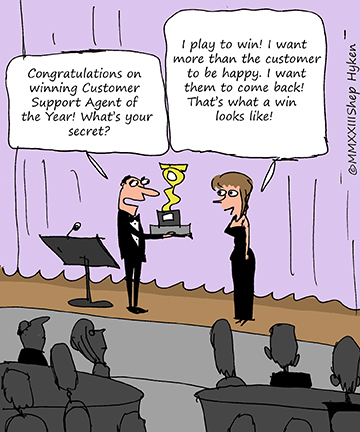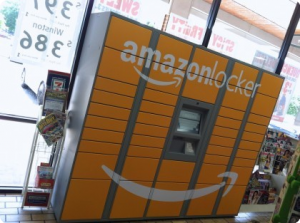
GUEST POST from Shep Hyken
One of the more enjoyable activities in my life is playing hockey. When I’m in town – not out speaking at conferences – I lace up the skates several times a week to play in a friendly hockey game. In close games, when my team is up by one or two goals, I remember my school days when our coaches encouraged us to continue playing to score, even when we were winning, versus switching to more defensive play to prevent the other team from scoring.
So, what does this have to do with business, specifically customer service and CX? Plenty!
In any team sport, the goal is to win. In the customer service world, we should create a “game plan” to deliver an experience that is perfect, never requiring a customer to reach out to us because of problems. Consider what Jeff Bezos of Amazon said many years ago: “The best customer service is if the customer doesn’t need to call you, doesn’t need to talk to you. It just works.” That’s a perfect example of playing to win.
But that doesn’t always work. Bezos quickly discovered that as perfect as Amazon might be, once the package left the warehouse, control was in the hands of delivery companies such as the USPS, FedEx, or UPS. If there was a delivery problem, even if it wasn’t Amazon’s fault, the customer still called Amazon.
That’s where Amazon learned to play great defense, typically managing complaints or issues so well that the company has earned a reputation for amazing customer service. And they still play to win. They continue to open more distribution sites and grow their fleet of airplanes and vehicles to manage the entire experience, so they don’t have to rely on outside vendors as much. And as perfect as they try to be, there will still be problems, so a good defense, as in a good customer service experience, supports the effort to win.
While we can’t all be Amazon, we can play a similar game. We need defense, which is the ability to respond to our customers’ questions, problems, needs, and complaints in a way that renews confidence for them to continue doing business with us. However, we must also play to win, which means continuously improving the customer experience, including eliminating or mitigating any of those customer issues.

In the customer service world, playing to win in customer service means eliminating the reasons customers call us for problems and complaints. Playing defense is focusing on being good at handling our customers’ problems or complaints. We need to be good at both.
Image Credits: Shep Hyken, Pexels
![]() Sign up here to join 17,000+ leaders getting Human-Centered Change & Innovation Weekly delivered to their inbox every week.
Sign up here to join 17,000+ leaders getting Human-Centered Change & Innovation Weekly delivered to their inbox every week.
 FedEx took the shipping world by storm about forty years ago, growing to become the defacto shipping leader, unseating UPS and DHL. But, then after thirty years of strong growth they began to lose their mojo. In 2003, in a reaction to UPS’ acquisition of Mail Boxes Etc., FedEx announced they were buying Kinko’s, a large United States based copy center chain. For me this showed that FedEx was beginning to lose its way, and it appears their connection to customer expectations and the current capabilities of technology is failing. For a company based on the promise of speed, FedEx is becoming increasingly slow.
FedEx took the shipping world by storm about forty years ago, growing to become the defacto shipping leader, unseating UPS and DHL. But, then after thirty years of strong growth they began to lose their mojo. In 2003, in a reaction to UPS’ acquisition of Mail Boxes Etc., FedEx announced they were buying Kinko’s, a large United States based copy center chain. For me this showed that FedEx was beginning to lose its way, and it appears their connection to customer expectations and the current capabilities of technology is failing. For a company based on the promise of speed, FedEx is becoming increasingly slow.
 I came across a
I came across a  So who should have come up with this potential innovation?
So who should have come up with this potential innovation?